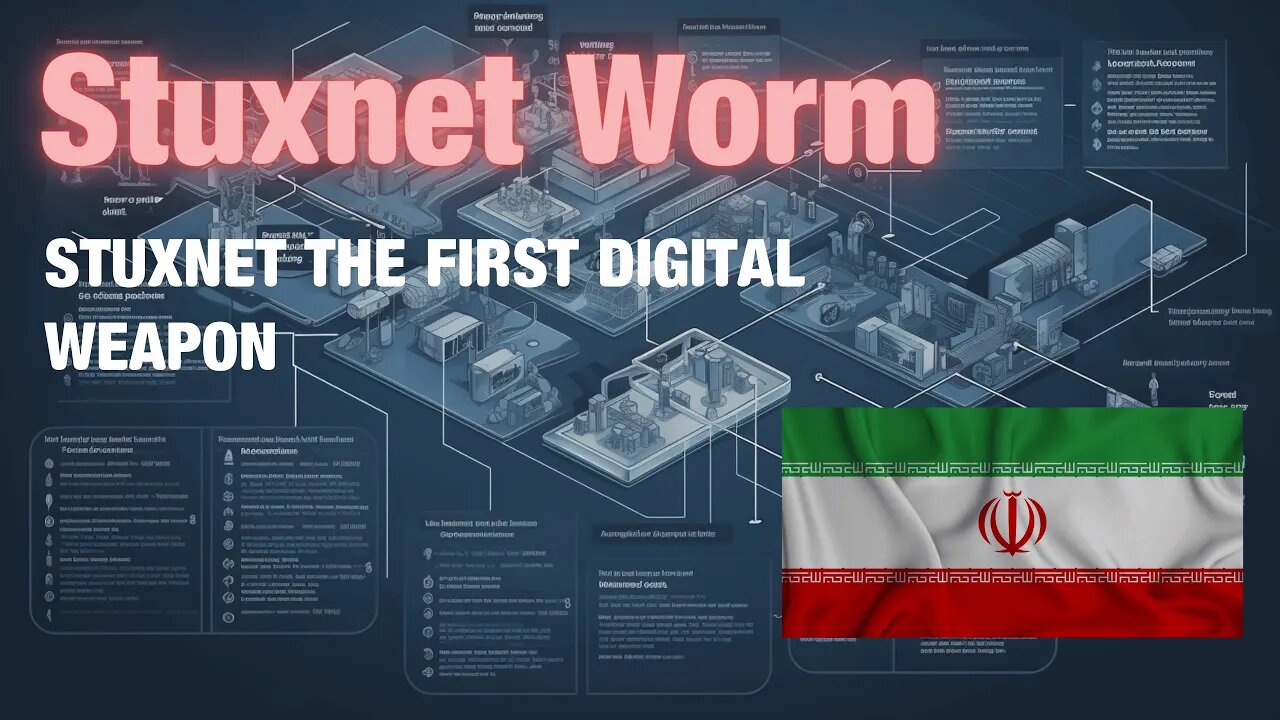Premium Only Content

Stuxnet the First Digital Weapon
Stuxnet, the first digital weapon, was a groundbreaking computer worm that targeted Iran's nuclear program. Developed through a collaboration between the United States and Israel, Stuxnet aimed to disrupt Iran's uranium enrichment activities by targeting centrifuges' control systems.
The worm exploited vulnerabilities in the SCADA systems, which control and monitor industrial processes. It spread through infected USB drives and utilized a combination of zero-day exploits and rootkit functionality to infect computers and remain undetected. Stuxnet's self-replication capabilities allowed it to spread across networks and infect new machines.
Once inside the targeted systems, Stuxnet covertly manipulated the centrifuge speeds, causing physical damage and malfunctions. Its purpose was to sabotage Iran's nuclear program without direct military intervention. Stuxnet demonstrated the potential of cyber weapons to impact physical infrastructure and highlighted the vulnerabilities of critical systems to cyberattacks.
The discovery of Stuxnet in 2010 raised awareness about the significant impact of cyber warfare. It served as a wake-up call for governments and organizations worldwide, highlighting the need for improved cybersecurity and defensive measures. Stuxnet ushered in a new era of state-sponsored cyber operations, with nations investing in developing cyber weapons and offensive capabilities.
The Stuxnet incident also raised concerns about cyber weapon proliferation and potential misuse. Its success demonstrated the potential for cyberattacks to cause physical damage and disrupt critical infrastructure, extending the scope of warfare beyond traditional military means.
Today, Stuxnet remains a significant case study in cyber warfare. It serves as a reminder of the evolving threats in the digital age and the importance of robust cybersecurity measures to safeguard critical systems from cyberattacks.
-
 LIVE
LIVE
The HotSeat
1 hour ago45% of Liberals Admit They're Mentally Unwell… and It Shows!
449 watching -
 LIVE
LIVE
StoneMountain64
2 hours agoThe new Sniper I can't put down
287 watching -
 LIVE
LIVE
TheAlecLaceShow
1 hour ago🚨 LIVE From The White House | Terror Attack by Illegal | Guest: Jim Pfaff | The Alec Lace Show
96 watching -
 1:59:34
1:59:34
Steven Crowder
6 hours ago🔴 Leftists Are Massivley Depressed: What Makes Being a Conservative so Much More Enjoyable
368K193 -
 2:15:02
2:15:02
The Quartering
5 hours agoWW3 The Closest Ever, Massive Disney Layoffs, The End Of PRIDE Month, Streaming Wars & More!
127K40 -
 4:45:47
4:45:47
Akademiks
5 hours agoDay 2/30. Diddy Trial Day 15. YSL Steele Turning up the Offense... Is Diddy Exposing these VICTIMS?
57.8K5 -
 LIVE
LIVE
LFA TV
17 hours agoLFA TV ALL DAY STREAM - TUESDAY 6/3/25
2,232 watching -
 1:01:51
1:01:51
The White House
4 hours agoPress Secretary Karoline Leavitt Briefs Members of the Media, June 3, 2025
37.7K19 -
 29:19
29:19
CryptoWendyO
2 hours ago $1.41 earnedXRP RALLY AFTER $100 MILLION PURCHASE? - HBAR ETF GOES LIVE!
14.2K4 -
 17:54
17:54
ROSE UNPLUGGED
19 hours agoDid Trump Move Saudi Arabia Towards Ezekiel’s Prophecy?
10.5K2